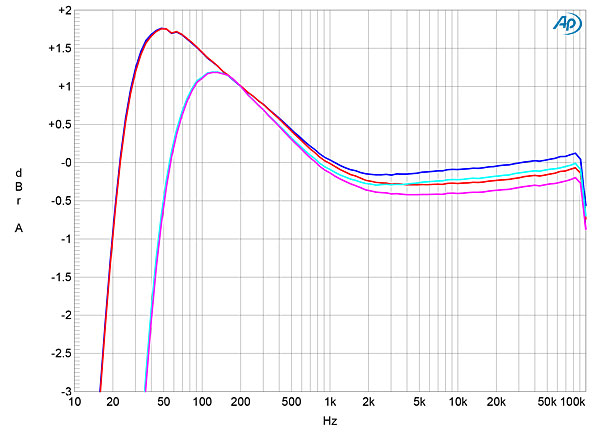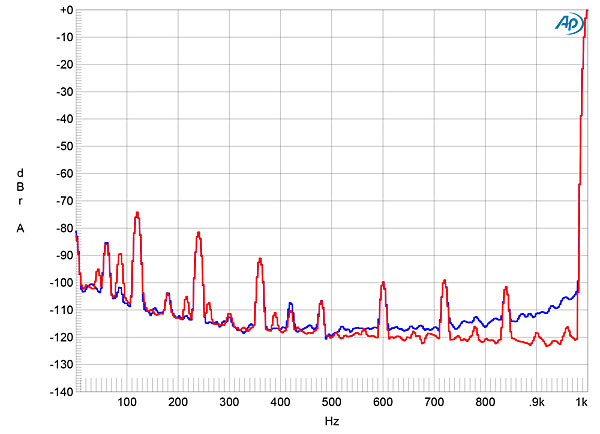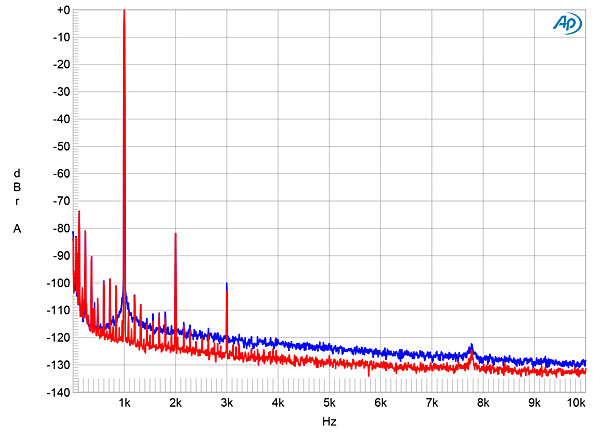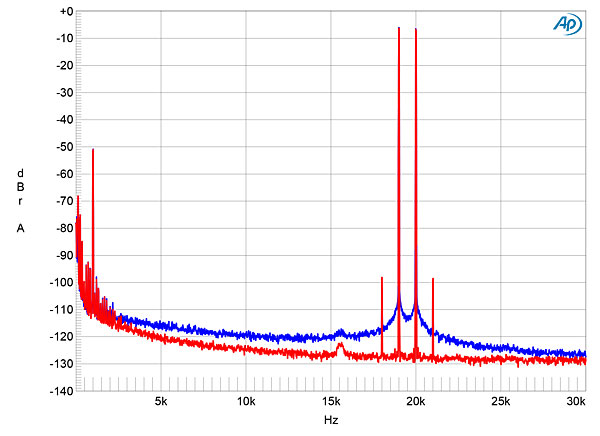| Columns Retired Columns & Blogs |
Wow! someone on ebay got a great deal recently - only $760.00 - 1568 Original Mono RVG.
I measured the Heed Audio Quasar phono preamplifier using my Audio Precision SYS2722 system (see the January 2008 "As We See It"). As always with phono stages, I experimented with the grounding between the preamp and the Audio Precision system to get the lowest level of noise. I ended up floating the Audio Precision's outputs from ground and connecting the Quasar's grounding post to the analyzer ground.
The Quasar preserved absolute polarity with both moving-coil and moving-magnet settings and inputs, and from both its High and Low outputs. There are internal jumpers to set the gain for the MC input, meaning that the gain and, hence, signal/noise ratio and overload margin can be optimized for a specific MC phono cartridge. The MM input gain is set to a fixed value, but the choice of High and Low outputs also means that the Quasar's performance can be optimized for a specific cartridge. For MM cartridges, the Low outputs offered 33.4dB of gain, the High outputs 48.45dB, thus bracketing the usual 40dB figure. The MC input, set to 600µV sensitivity, offered 40.1dB gain at the Low outputs; set to 220µV, the gain was 48dB; and to 100µV, it was 54.9dB. As with the MM input, these figures were 15dB greater from the High outputs.
The input impedance for the MM input was appropriately high at 1kHz and 20kHz, at 61 and 48k ohms, but dropped precipitously, to 1000 ohms, at 20Hz. This, presumably, is why Ken Micallef found that using a step-up transformer with the Quasar's MM input didn't work. The Quasar's manual states that the choices for input impedance for the MC input are 100, 220, 470, and 47k ohms, the last when the impedance jumpers are removed. However, printed on the circuit board are "100 ohms," "470 ohms," and "1000 ohms," and my measurements indicated that at 1kHz, the actual input impedances were close to the circuit-board legends: 115, 510, and 990 ohms. The values at 20kHz were similar, but as with the MM input, the input impedances at low frequencies were significantly lower. With the jumpers set to "1000 ohms," for example, the MC input impedance at 20Hz was 204 ohms rather than the 990 ohms I measured at 1kHz. I also got anomalous results when I removed the jumpers, which should give, according to the manual, an input impedance of 47k ohms. Instead, the impedance was very similar to what I measured with the jumpers set to "1000 ohms."
The output impedance from the Low outputs was a very low 9 ohms at high and middle frequencies, but increased to 508 ohms at the bottom of the audioband. I got some anomalous results when I examined the output impedance from the High outputs, including an apparently negative output impedance in some circumstances. But measured at 450mV output, the High output impedance was extraordinarily low, at 1.1 ohms at 20kHz and 0.3 ohm at 1kHz, but much higher at 20Hz: 729 ohms. As a result of the increased impedance at low frequencies, the Heed's low frequencies rolled off prematurely into a low, 600 ohm load (fig.1, cyan and magenta traces) compared with a 100k ohm load (blue, red). Fig.1 reveals close channel matching, but also that the RIAA correction offers up to 1.75dB of boost in the bass before the usual infrasonic rolloff, which reaches –3dB at 16Hz. In this respect, the Quasar behaves similarly to the phono stage of the Heed Elixir integrated amplifier.

Channel separation (not shown) was around 70dB R–L and 80dB L–R from 300Hz to 20kHz. The Heed's S/N ratio, measured with the input shorted to ground, depended on whether the MC or MM input was being used, the MC gain setting, and whether it was measured at the Low or High outputs. In the best case, with the MC sensitivity set to 600µV and examined at the Low outputs, the unweighted, wideband ratio was an excellent 73.5dB ref. 1kHz at 500µV, improving to 87.5dB when A-weighted. Increasing the MC sensitivity reduced the ratio by around 3dB for each setting, while looking at the High outputs reduced the ratio by around 10dB. The worst case was the MM input measured at the High output: 57.5dB wideband, unweighted, and 70.5dB A-weighted. Nevertheless, this is still good performance, and the spectrum of the Quasar's low-frequency noise floor, taken from the Low output at 1V output (fig.2), reveals that the main sources of noise are spuriae at the full-wave-rectified frequency of 120Hz and its harmonics. (All measurements were taken with the Quasar's Q-PSU power supply placed as far away from the signal enclosure as their umbilical cable allowed.)

These spuriae can also be seen in fig.3, which shows the spectrum of the Quasar's Low output with the MM input fed 1kHz at a high enough level to give an output voltage of 1V. The second harmonic is the highest in level, at –80dB (0.01%), and while the third harmonic can be seen at –100dB (0.001%), it disappeared at lower input levels. Overload margins depended on the input, output, and gain setting. In the worst case (MC input, High output, 100µV sensitivity), the margin was 10dB at 1kHz ref. 500µV; and in the best case (MC, High, 600µV), an extraordinarily high 38dB. The margin was lower at low frequencies: for the MM input at the High output it was 17.5dB at 20kHz, 27.5dB at 1kHz, but just 5dB at 20Hz.

When I looked at how the Heed Quasar handled an equal mix of 19 and 20kHz tones, at a level fed to the MM input that resulted in 500mV at the Low output, the difference product at 1kHz lay at a moderately high –50dB (0.3%), though higher-order intermodulation products were respectably low in level (fig.4). I was puzzled, however, by what appeared to be noise-floor modulation in the left channel (blue trace).

Heed Audio's Quasar offers users considerable flexibility in optimizing its gain, noise, and distortion performance. In general, they should use the lowest-possible gain to get the best sound from their cartridges. However, I was perturbed by the MM input's very low input impedance at low frequencies. I recommend the Quasar for use only with moving-coil cartridges.—John Atkinson

Wow! someone on ebay got a great deal recently - only $760.00 - 1568 Original Mono RVG.

+2db boost in the bass, and slight treble boost, way off following the correct riaa curve.
Cheers George

this could be a great audiophile bargain. I've been looking to upgrade from an old EAR 834 for a while. Love the looks of these components as well. The Gold Note PH-10 - not reviewed in Stereophile yet but in some other on-line pubs also seems to a contender.